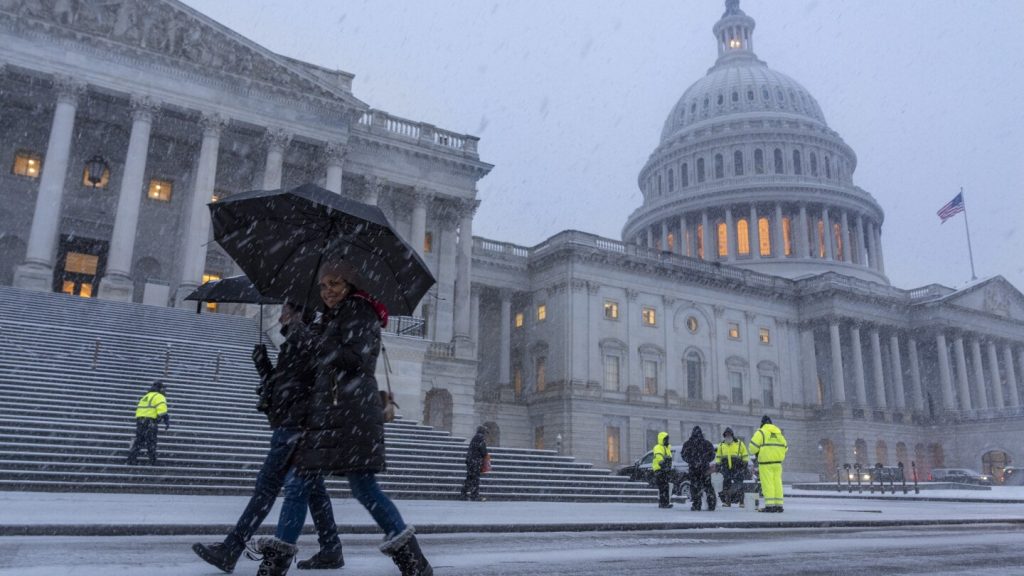Snowstorm Brings Chaos to Mid-Atlantic States
A snowstorm swept into the mid-Atlantic states on Tuesday, causing a series of accidents, prompting school closures, and raising concerns about potential power outages. The hardest hit areas, with up to 10 inches (25 centimeters) of snow, were parts of Virginia and West Virginia. Ice accumulations were particularly alarming, with glazes in Kentucky and West Virginia and up to a half-inch (1.3 centimeters) in higher elevations of West Virginia and the Roanoke Valley in southwestern Virginia. The National Weather Service warned that heavy ice buildups could lead to power outages and tree damage. The weather service’s Blacksburg, Virginia, office reminded residents, "Did you think winter was over? Think again!" as snow and sleet moved into western Virginia and North Carolina, transitioning to freezing rain by the afternoon.
Preparations and Mobilization
Utility companies and state agencies were on high alert. Appalachian Power, serving 1 million customers across West Virginia, Virginia, and Tennessee, requested 700 additional workers from neighboring utilities to manage any storm-related issues. The Virginia National Guard deployed about 65 soldiers to key locations along the Interstate 95 and state Route 29 corridors and in southwest Virginia. Another 20 soldiers and members of the Virginia Defense Force provided support. Troops equipped with heavy-duty trucks and organized into chainsaw teams were ready to clear roads and power line routes. Black Hawk helicopters with rescue hoist capabilities were also on standby, ensuring a rapid response to any emergencies.
Winter Storm Warnings and Travel Disruptions
Winter storm warnings extended from Kentucky to southern New Jersey, with the snow-and-ice mix expected to turn into rain by Wednesday afternoon as temperatures rose. Meanwhile, a separate storm system was set to dump heavy snow from Kansas to the Great Lakes, starting Tuesday night. The Kansas Legislature canceled Wednesday meetings, and Governor Laura Kelly closed state offices in Topeka. In Virginia, where Governor Glenn Youngkin declared a state of emergency and schools and government offices were closed, state police reported numerous accidents, including four injuries. The Department of Transportation advised residents to avoid driving if possible. In the Washington, D.C., area, the Office of Personnel Management recommended that federal workers leave early. Schools in and around Baltimore also let out early to ensure student safety.
Treacherous Conditions on the Roads
Conditions on the roads were particularly treacherous. In southern West Virginia, multiple crashes temporarily shut down several major highways. Smith’s Towing and Truck Repair in Greenbrier County responded to at least 15 calls, primarily from tractor-trailer drivers who got stuck on Interstate 64 near the Virginia border. Dispatcher Kelly Pickles described the situation, “Basically, they just get sucked over into the median or they go off of the interstate just a little bit on the right-hand side. And they just don’t have enough power in their vehicles to get back onto the road due to the icy conditions.” The icy roads posed significant challenges, making travel extremely hazardous.
A Winter Wonderland Amidst the Chaos
Despite the chaos, for some, the snow brought a sense of beauty and wonder. Paige Williams, owner of Downtown Books in Lexington, Virginia, described the scene at her home in the Blue Ridge Mountains: “It’s like a wonderland. The fluffy snow sticks to everything, making it look beautiful. It’s sticking to the evergreens and to some of the rock walls. It’s really just gorgeous.” Williams, 58, closed her store with up to 9 inches (about 23 centimeters) of snow in the forecast. She hoped to reopen on Wednesday, noting that Lexington and Rockbridge County are efficient at clearing roads. However, the temperature fluctuations and the rain expected to follow could either improve or worsen road conditions.
Frigid Temperatures and Cold-Weather Emergencies
The frigid temperatures extended from Portland, Oregon, to the Great Lakes. In Detroit, temperatures dropped into the lower teens (about minus 11 Celsius), leading to the tragic deaths of two children under age 10, likely from exposure, after they were found with their family in a van in a casino parking garage. In Butte, Montana, the temperature plummeted to minus 31 degrees (minus 35 degrees Celsius), where over the past two winters, at least five people died from cold exposure. Advocates for the homeless distributed sleeping bags, jackets, and mittens to those in need, and 36 people sought refuge in the 16-bed Butte Rescue Mission. In North Dakota, all 12 beds at the Minot Area Men’s Winter Refuge were filled as the temperature dipped to minus 17 (minus 27 Celsius). In Oregon’s Multnomah County, officials extended a state of emergency, opening emergency shelters to protect vulnerable individuals from the cold.












